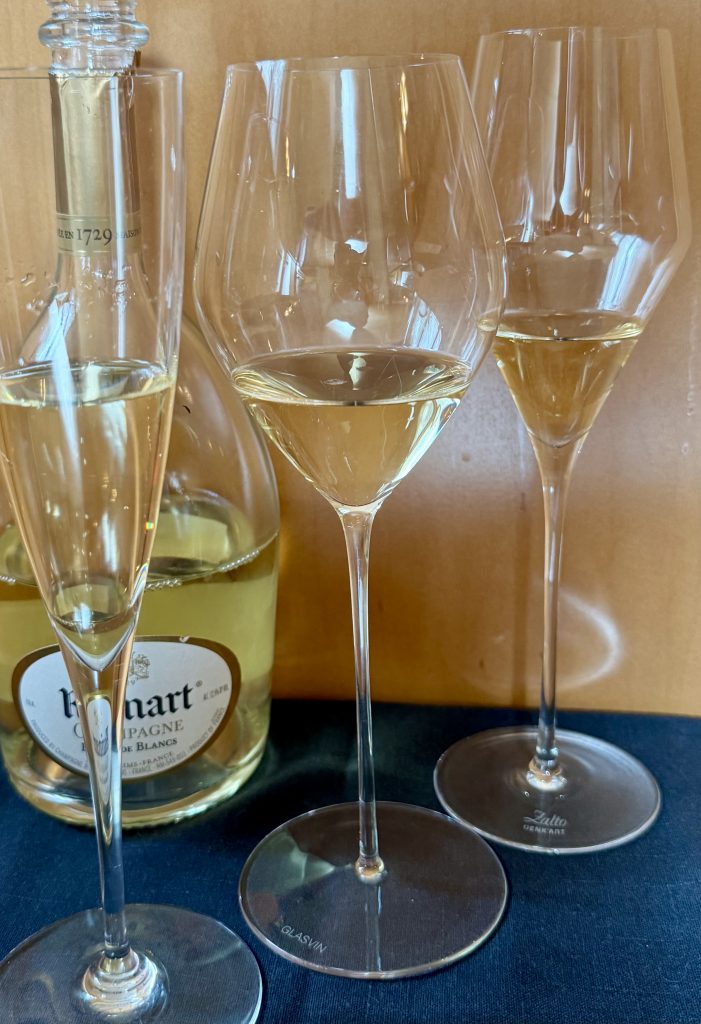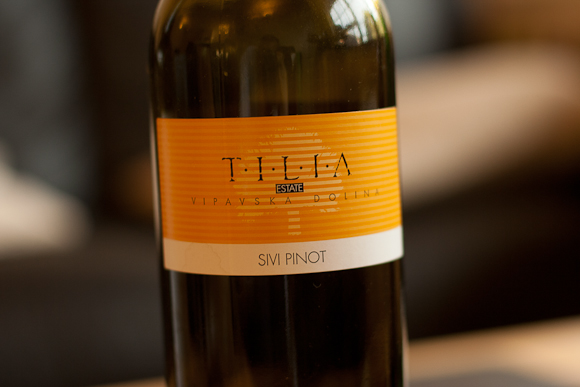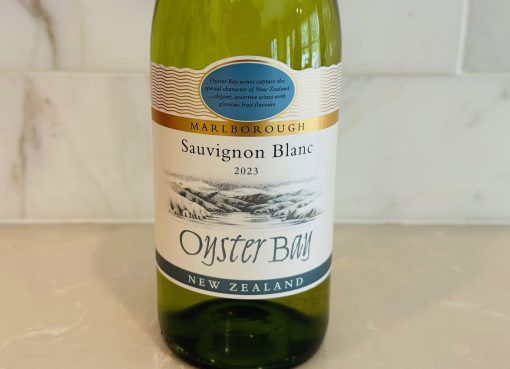The Best Champagne Glass for Celebrating the Holidays

The International Wine Review recently compared Champagne served in a traditional flute and two tulip-shaped crystal glasses from Glasvin and Zalto. Champagne glasses have changed radically over the years. Thomas Jefferson drank his wine in a flute-shaped glass (an elegant replica is sold at Monticello.org), but it’s unlikely he drank much sparkling Champagne. His preference (like that of French gourmets at the time) was for the non-mousseux style of Champagne.
The 1920s flapper era saw the arrival in America of the coupe glass, although its origins date back to the earliest days of Champagne when the traditional rounded bowls of wine glasses were modified for sparkling wine. The coupe was replaced in popular use by the now traditional, narrow, high flute later in the 20th century, although records show the flute being used by the cognoscenti much earlier. The flute both displayed and preserved the wine’s effervescence. Today, there is yet another stylistic change. The tulip-shaped glass is all the rage among connoisseurs, although the coupe is still used for Champagne cocktails, and most regular wine drinkers probably still use the flute.
The tulip-shaped glass can be seen as a compromise between the coupe and the flute. The broad, flat coupe puts the emphasis on aromas over bubbles, while the flute does the opposite. The tulip glass shows the bubbles rising from the bottom of the glass while also providing a fuller bouquet than the flute.
We think the tulip shape is a beautiful compromise, especially if the glass is crystal with a thin, delicate stem. We tasted Ruinart Champagne in Zalto and Glasvin tulip-shaped, hand blown crystal glasses. Both are very light, tall and elegant with thin stems, weighing almost nothing and lending an ethereal quality to the already diaphanous Ruinart Blanc de Blancs. The Zalto is narrower with a deeper base, giving a bit more focus to the fine bubbles of the Ruinart, while the Glasvin is a wider tulip, which puts a bit more emphasis on the wine’s aromatic complexity, especially important for aged sparkling wines.
There is no right or wrong here. Which glass you prefer depends on your tastes and the Champagne style. In either case, take care washing these delicate vessels. Holding the base in the left hand and washing the bowl with the right increases the risk of a nasty snap of the fragile stem. And most dishwashers do not easily accommodate glasses of this height. Our recommendation: wash with dish soap, rinse in hot water and drain, then use one towel to hold the bowl and another light towel (microfiber works well) to gently wipe dry the inside of the glass. Handle gently, and do not try to polish the glass.
Neither the Zalto nor the Glasvin are casual party glasses. For potentially rambunctious parties, we recommend an inexpensive flute or white wine glass. Unless, of course, you are a tech billionaire with access to an infinite supply of both money and glasses.


